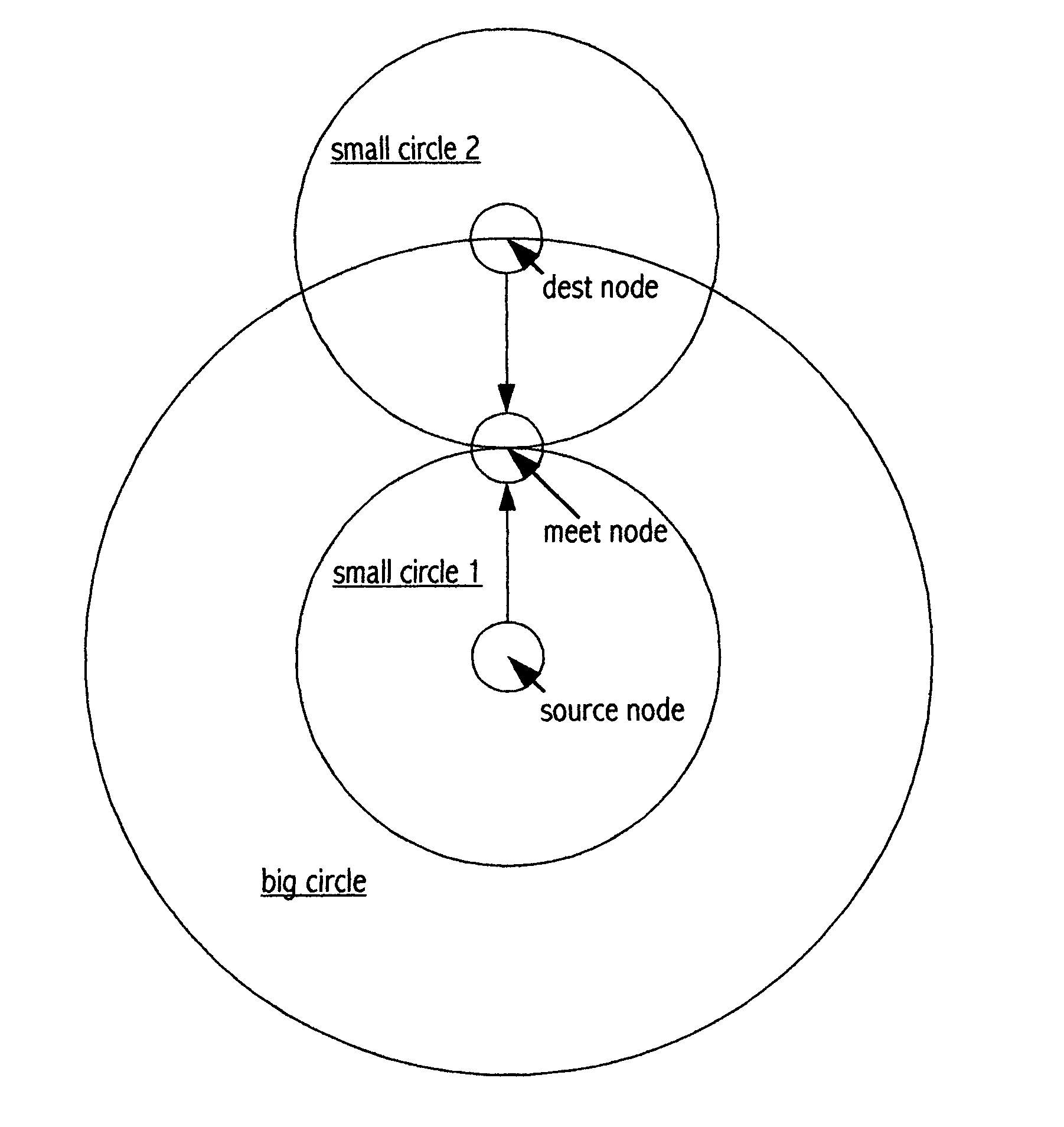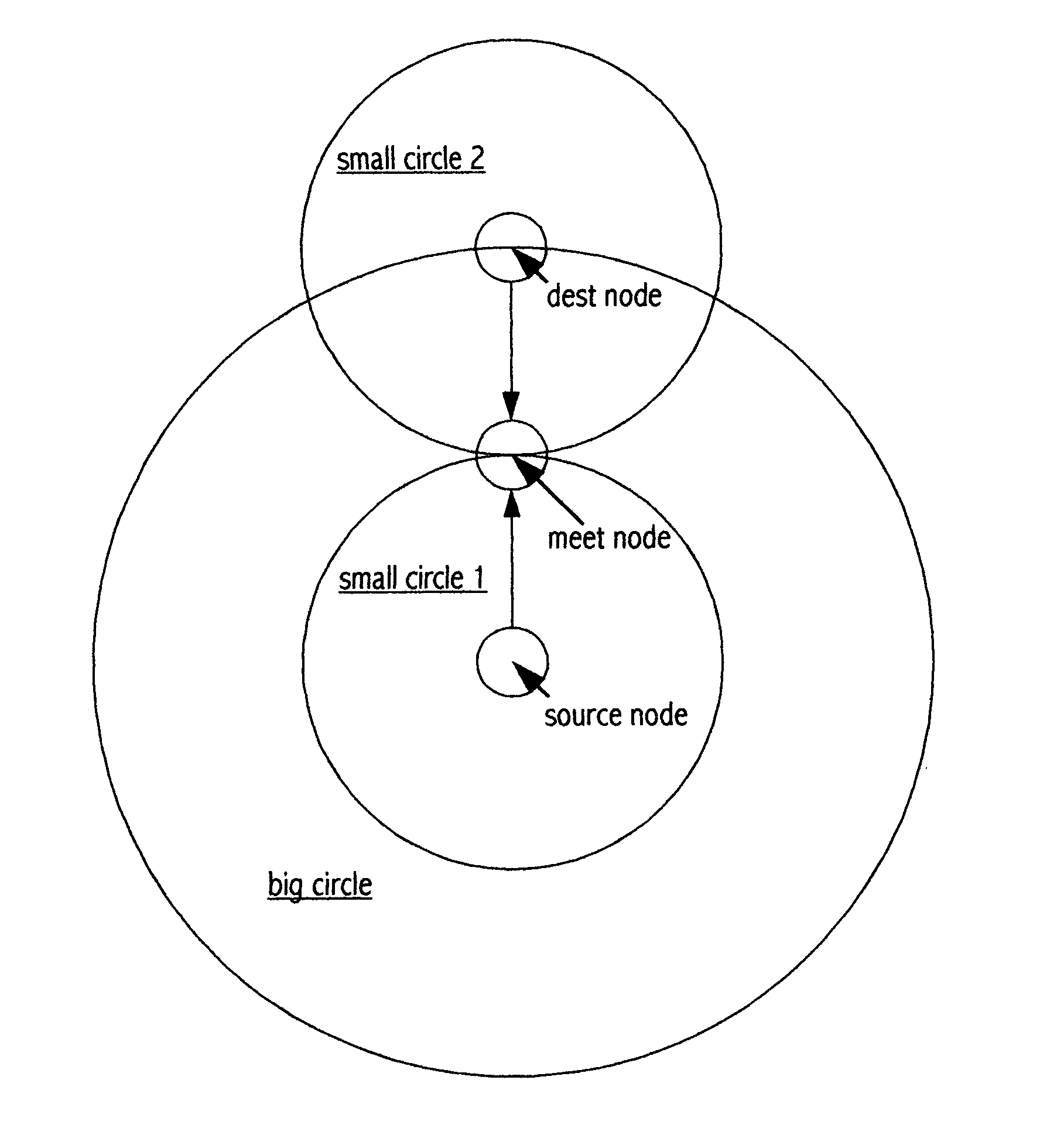Shortest path search method "Midway"
a search method and shortest path technology, applied in the field of shortest path search method " midway, can solve the problems of b>2 and the inefficiency of dijkstra algorithm, and achieve the effect of reducing the number of nodes, reducing the overhead of search, and improving efficiency and speed
- Summary
- Abstract
- Description
- Claims
- Application Information
AI Technical Summary
Benefits of technology
Problems solved by technology
Method used
Image
Examples
Embodiment Construction
Comparison of Overhead (i.e. Complexity) Between Midway and Dijkstra Algorithms
[0012]To find a shortest path from a source node to a single destination node, the Dijkstra algorithm overhead is measured by O(PD2) where PD is the number of nodes in the searching range shown by a big circle in sheet 1-1, while the Midway algorithm overhead is measured by O(PM12) plus O(PM22) where PM1 is the number of nodes in small circle 1 and PM2 is the number of nodes in small circle 2 (sheet 1-1). The number of nodes contained in a searching range (depicted by a circle) depends on the topology of the network and the area of the circle (i.e. square of the radius of the circle), and it grows rapidly with the radius which represents the total number of hops or total path cost of the shortest path. The diagram in sheet 1-1 shows that the meet node is in the middle of the shortest path, the small circle 1 radius approximately equals to the small circle 2 radius and equal to one half of the big circle r...
PUM
 Login to View More
Login to View More Abstract
Description
Claims
Application Information
 Login to View More
Login to View More - R&D
- Intellectual Property
- Life Sciences
- Materials
- Tech Scout
- Unparalleled Data Quality
- Higher Quality Content
- 60% Fewer Hallucinations
Browse by: Latest US Patents, China's latest patents, Technical Efficacy Thesaurus, Application Domain, Technology Topic, Popular Technical Reports.
© 2025 PatSnap. All rights reserved.Legal|Privacy policy|Modern Slavery Act Transparency Statement|Sitemap|About US| Contact US: help@patsnap.com


